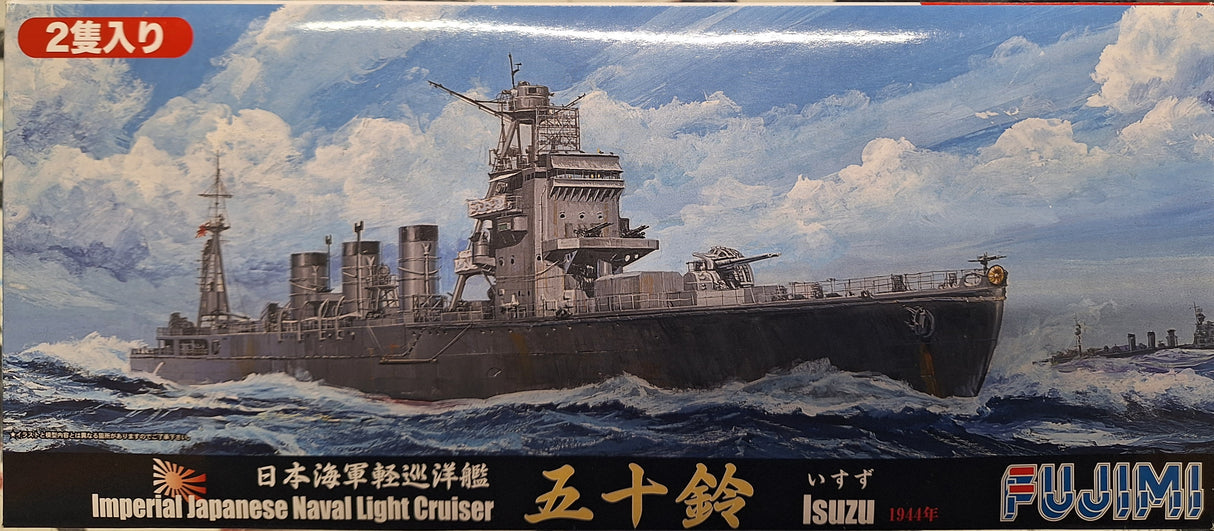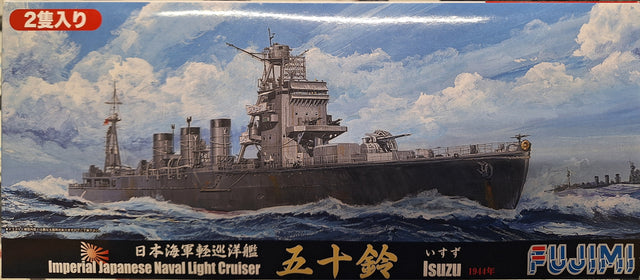Fujimi 1:700 Isuzu IJN Light Cruiser 1944
Fujimi 1:700 Isuzu IJN Light Cruiser 1944 is backordered and will ship as soon as it is back in stock.
Couldn't load pickup availability
Delivery and Shipping
Delivery and Shipping
We use tracked courier for fast delivery New Zealand wide
Description
Description
Isuzu was a Japanese light cruiser the keel of which was laid in 1920, launched in October 1921, and commissioned in the Imperial Japanese Navy in August 1923. The length of the ship at the time of launching was 162.1 m, width 14.2 m, and the actual full displacement - 5,700 tons. The cruiser Isuzu had a maximum speed of 36 knots. At the time of launching, the main armament was 7 140 mm guns in single positions, and the additional armament was, among others: 2 80 mm cannons and 8 torpedo tubes.
Isuzu was the second Nagara-class cruiser. The cruisers of this type were built on the basis of the successful design of the Kuma class ships. In fact, the two types differ slightly, and often the Nagara type is referred to as the modified Kuma type. The main differences were in the construction of superstructures, which allowed Nagara-type units to operate seaplanes. Already at the time of launching, they also received better torpedo tubes of a new type. Nagara-class cruisers were built from the very beginning as the so-called "Leaders" of the destroyer flotillas, which resulted in the creation of very fast ships, with good artillery armament, but relatively poorly armored. The combat career of cruiser Isuzu began during the Sino-Japanese fighting in the 1930s. In the course of these struggles, he performed mainly patrol functions in Chinese waters and supported Japanese landings. The Isuzu combat trail in World War II began in December 1941 with support for the Japanese attack on Hong Kong. From December 1941 to April 1942, it covered subsequent landing operations of French Indochina. From September 1942, he fought in the area of the Solomon Islands and Guadalcanal Island - in the course of these fights he took part in the Battle of Santa Cruz. Isuzu also took part in the Battle of Leyte Bay in October 1944. In November this year, it was badly damaged and was repaired for a few months: first to Singapore, and then to the port of Surabaya. From April 1945, after repairs were completed, it was primarily used as a convoy guard. The cruiser Isuzu was sunk on April 7, 1945 by the American submarine USS Gabilan.
Payment & Security
Payment methods
Your payment information is processed securely. We do not store credit card details nor have access to your credit card information.



